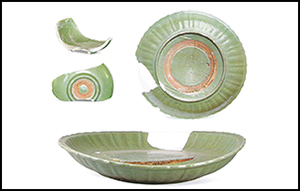Published online by Cambridge University Press: 08 April 2015

The imperially sponsored maritime expeditions led by Zheng He in the early fifteenth century AD projected Ming Chinese power as far as Java, Sri Lanka and the East African coast. The Indian Ocean voyages are well documented in Chinese and Islamic historical accounts and by the nautical charts of Zheng He's journeys. Less clear has been the exact location of ancient Hormuz, the destination of Zheng He's voyages in the Persian Gulf. Recent re-analysis of ceramics from coastal southern Iran provides a solution. Archaeological evidence for Ming ceramics on present-day Hormuz Island and jewellery and gemstones of Iranian origin in southern China suggest that ancient Hormuz and Hormuz Island are one and the same.